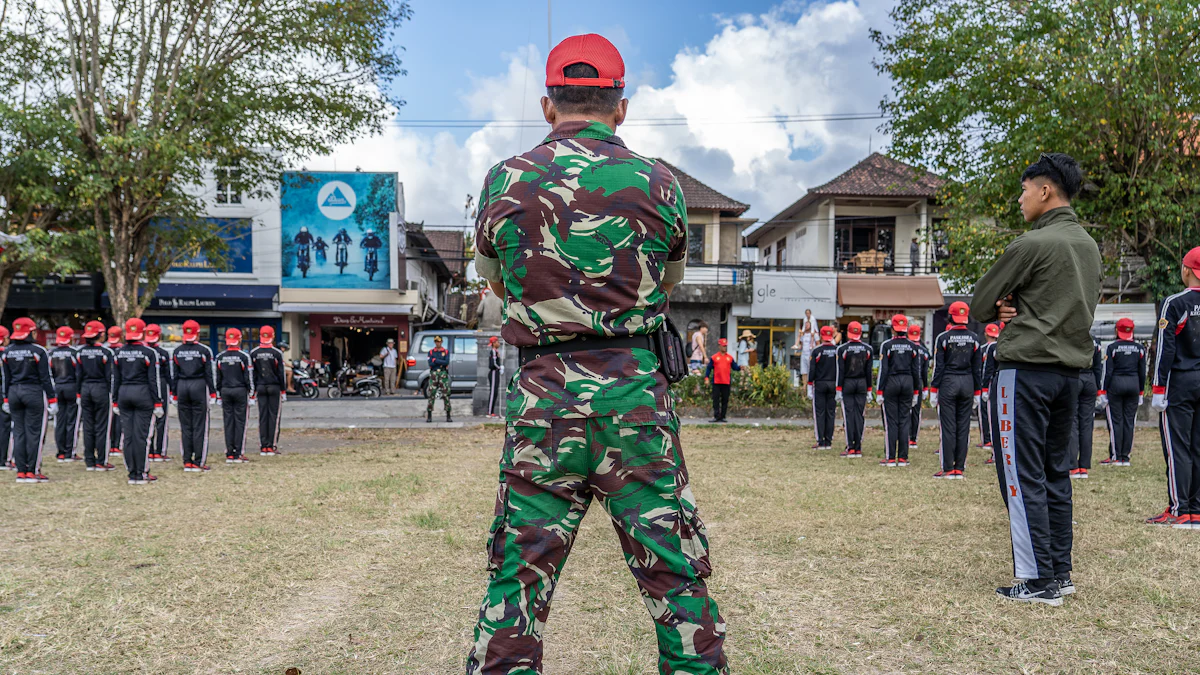The Evolution of Camouflage Fabrics

We are professional in making all kinds of military camouflage fabrics, woolen uniform fabrics, workwear fabrics, military uniforms and jackets for more than fifteen years. In order to meet the needs of different customers, we could do the special treatment on the fabric with Anti-IR, waterproof, anti-oil, Teflon, anti-dirt, Antistatic, Fire retardant, Anti-mosquito, Antibacterial, Anti-wrinkle, etc .
Welcome to contact us without hesitation !
Historical Development
Early Uses in Warfare
Camouflage fabrics have a rich history that dates back to the eighteenth and nineteenth centuries. During this period, military sharpshooters began concealing themselves to gain an advantage in warfare. This practice laid the groundwork for the more widespread use of camouflage during the First World War. Soldiers needed to blend into their surroundings to avoid detection by the enemy. The invention of the rifle further emphasized the need for effective concealment, leading to the creation of the first camouflage patterns. By the time of the First World War, camouflage print had become the uniform of choice, allowing soldiers to merge seamlessly with their natural environment.
Technological Advancements Over Time
The development of camouflage fabrics transitioned from an art form to a scientific approach during the 19th century. This shift enabled the creation of more effective patterns and materials. In 1916, the British Army effectively utilized army camouflage, solidifying its place in military strategy. As technology advanced, so did the methods for producing camouflage fabrics. These advancements allowed for more precise and varied patterns, enhancing the ability of military personnel to remain undetected in diverse environments.
Modern Innovations
Digital and Adaptive Camouflage
In recent years, digital and adaptive camouflage have revolutionized military uniforms. Digital camouflage uses pixelated patterns that break up the outline of a soldier, making it difficult for the human eye to detect. This innovation in camouflage fabrics has become the preferred choice for many armed forces around the world. Adaptive camouflage takes this a step further by using technology to change the pattern and color of the fabric in real-time, adapting to different environments and lighting conditions.
Environmental and Tactical Considerations
Modern camouflage fabrics are designed with both environmental and tactical considerations in mind. They must perform well in various terrains, from dense forests to arid deserts. The fabrics are engineered to provide concealment while also offering durability and comfort. This ensures that you can operate effectively in any setting. The ongoing evolution of camouflage technology continues to improve the safety and operational success of military personnel.
Camouflage fabrics play a vital role in military uniforms, enhancing your ability to remain undetected and protected. Selecting the right supplier ensures that you receive high-quality and innovative apparel. The ongoing evolution of camouflage technology continues to improve military operations and safety. With global demand for camouflage fabric surpassing 350 million meters annually, these fabrics remain crucial in both functional and fashion contexts. As you rely on these advancements, you gain a strategic advantage, blending seamlessly into diverse environments and ensuring mission success.
Post time: Jan-21-2025
